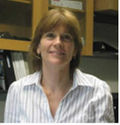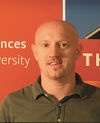Difference between revisions of "Metal ion complexes in biological imaging"
(→Confirmed speakers) |
(Add program) |
||
| Line 2: | Line 2: | ||
The rich magnetic, radiochemical and photophysical properties of metal ions will be featured in biological imaging applications. A range of imaging modalities will be covered in this symposium including positron emission tomography (PET) with radiotracers, optical imaging with fluorescent metal ion complexes, and magnetic resonance imaging (MRI) with lanthanide complexes. Presented research will range from the development of basic chemistry and synthesis of metal-based imaging agents to applications in cell culture or in animals. | The rich magnetic, radiochemical and photophysical properties of metal ions will be featured in biological imaging applications. A range of imaging modalities will be covered in this symposium including positron emission tomography (PET) with radiotracers, optical imaging with fluorescent metal ion complexes, and magnetic resonance imaging (MRI) with lanthanide complexes. Presented research will range from the development of basic chemistry and synthesis of metal-based imaging agents to applications in cell culture or in animals. | ||
Challenges in the field of biological imaging will be emphasized. The preparation of conjugated complexes to facilitate the delivery of metal ion imaging agents into cells will be presented. Other lectures will focus on metal ion complexes that selectively bind to important biological receptors such as those found on tumor cells. A third challenge, the preparation of responsive imaging agents that report on biochemical variables such as pH, temperature or enzyme activity, will be addressed in this symposium. | Challenges in the field of biological imaging will be emphasized. The preparation of conjugated complexes to facilitate the delivery of metal ion imaging agents into cells will be presented. Other lectures will focus on metal ion complexes that selectively bind to important biological receptors such as those found on tumor cells. A third challenge, the preparation of responsive imaging agents that report on biochemical variables such as pH, temperature or enzyme activity, will be addressed in this symposium. | ||
| + | |||
| + | This session will take place on the afternoon of '''Thursday, June 3rd''' in Timerman 131. | ||
==Session organizer== | ==Session organizer== | ||
| Line 13: | Line 15: | ||
* '''[http://chemistry.syr.edu/faculty/doyle.html Prof. Robert Doyle]''', Syracuse University, Department of Chemistry: "''Cobalamin based delivery/targeting from Rhenium to Rotavirus''." | * '''[http://chemistry.syr.edu/faculty/doyle.html Prof. Robert Doyle]''', Syracuse University, Department of Chemistry: "''Cobalamin based delivery/targeting from Rhenium to Rotavirus''." | ||
* '''Dr. Mark Bartholoma''', Harvard Medical School, Cambridge, MA, and '''[http://www-che.syr.edu/faculty/zubieta.html Prof. Jon Zubieta]''', Syracuse University, Department of Chemistry: "''Re(CO)3 Thymidine Complexes as Potential Anticancer Agents: Synthesis, Cytotoxicity and Insight into the Mechanism of Action.''." | * '''Dr. Mark Bartholoma''', Harvard Medical School, Cambridge, MA, and '''[http://www-che.syr.edu/faculty/zubieta.html Prof. Jon Zubieta]''', Syracuse University, Department of Chemistry: "''Re(CO)3 Thymidine Complexes as Potential Anticancer Agents: Synthesis, Cytotoxicity and Insight into the Mechanism of Action.''." | ||
| + | |||
| + | ==Program== | ||
| + | {{Metal Ion Complexes in Biological Imaging}} | ||
[[Category:Program content]] | [[Category:Program content]] | ||
Revision as of 05:41, 1 June 2010
The rich magnetic, radiochemical and photophysical properties of metal ions will be featured in biological imaging applications. A range of imaging modalities will be covered in this symposium including positron emission tomography (PET) with radiotracers, optical imaging with fluorescent metal ion complexes, and magnetic resonance imaging (MRI) with lanthanide complexes. Presented research will range from the development of basic chemistry and synthesis of metal-based imaging agents to applications in cell culture or in animals. Challenges in the field of biological imaging will be emphasized. The preparation of conjugated complexes to facilitate the delivery of metal ion imaging agents into cells will be presented. Other lectures will focus on metal ion complexes that selectively bind to important biological receptors such as those found on tumor cells. A third challenge, the preparation of responsive imaging agents that report on biochemical variables such as pH, temperature or enzyme activity, will be addressed in this symposium.
This session will take place on the afternoon of Thursday, June 3rd in Timerman 131.
Session organizer
Prof. Janet Morrow is a professor and associate chair for the chemistry department at the University at Buffalo. Dr. Morrow specializes in the synthesis of inorganic complexes for medicinal, diagnostic, sensing or catalytic applications.
Confirmed speakers
- Dr. Robert H. Mach, Director of Radiological Chemistry Laboratory, Washington University School of Medicine: "The Use of Radiometals in Nuclear Medicine Imaging Procedures".
- Prof. Robert Doyle, Syracuse University, Department of Chemistry: "Cobalamin based delivery/targeting from Rhenium to Rotavirus."
- Dr. Mark Bartholoma, Harvard Medical School, Cambridge, MA, and Prof. Jon Zubieta, Syracuse University, Department of Chemistry: "Re(CO)3 Thymidine Complexes as Potential Anticancer Agents: Synthesis, Cytotoxicity and Insight into the Mechanism of Action.."
Program
Thursday, June 3, 1:00 PM - 4:30 PM
- Metal Ion Complexes in Biological Imaging
- Timerman 131
Organizer/Presider: Janet Morrow
1:00 204 The Use of Radiometals in Nuclear Medicine Imaging Procedures. Robert H. Mach, Washington University School of Medicine
1:45 205 Tuning the Rate Constant for Exchangeable Alcohol Protons in Lanthanide(III) PARACEST Agents. Janet R. Morrow, Jacob Hammell and Leandro Buttarazzi, University at Buffalo, State University of New York
2:15 206 Cobalamin Based Delivery/Targeting from Rhenium to Rotavirus. Robert Doyle, Debbie Valentin and Amy Rabideau, Syracuse University
2:45 Intermission
3:00 207 Probing Conformational Changes in Transferrin during Endocytic Acidification. Kate E. Anderson1, Anne B. Mason2, Ashley N. Steere2 and Margarida Barroso1, (1)Albany Medical College, (2)University of Vermont College of Medicine
3:30 208 Re(CO)3 Thymidine Complexes as Potential Anticancer Agents: Synthesis, Cytotoxicity and Insight into the Mechanism of Action. Mark D. Bartholomä1, Anthony Vortherms1, Shawn Hillier2, John Joyal2, John Babich2, Robert P. Doyle1 and Jon Zubieta1, (1)Syracuse University, (2)Molecular Insight Pharmaceuticals, Inc.
4:00 209 Chemical Model for DNA Binding Pharmaceuticals Based on Ruthenium Compounds with Organic Side Chains. Samantha Glazier and Kristin Berretta, St. Lawrence University



